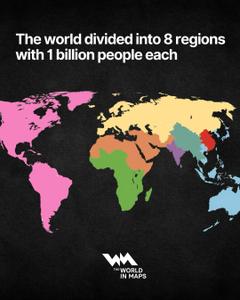environmental impact

Maps / 22 weeks ago
A new look at humanity: Map reimagines the world in 8 equal population regions
In a compelling visual produced by The World in Maps, the global population has been redrawn to reflect an entirely different reality: instead of geographic, political, or cultural boundaries, the world is divided into eight regions with exactly one billion people each. The map, boldly colour-coded and superimposed on a traditional world map layout, challenges conventional perspectives on global demographics. It provides a stark reminder of where people are concentrated and how dramatically population density varies across the Earth.

Environment / 23 weeks ago
Seller Glacier tops the charts as the largest in the world
Seller Glacier, located on the western edge of the Antarctic Peninsula, has been identified as the largest individual glacier in the world. Spanning an immense 7,018 square kilometres, this colossal ice body is slightly smaller than the Greek island of Crete. According to the infographic published by World Visualized, Seller Glacier surpasses other large glaciers such as Alexander Island Glacier No. 1 (4,766 sq. km), Thurston Island Glacier No. 1 (5,261 sq. km), and Alexander Island Glacier No. 2 (3,980 sq. km). These impressive measurements underscore Antarctica’s continued dominance in global glacier rankings.

Environment / 26 weeks ago

